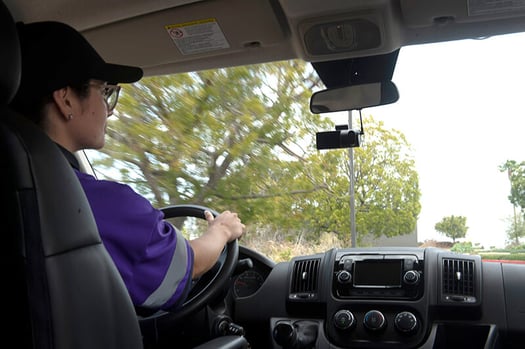Implementing a telematics solution isn’t just about the fleet data you will be able to access. Nor is it about the technology. Indeed, implementing a telematics solution should amount to a major change for your organization.
How you manage your fleet will change. How you make decisions will change. Tasks and processes will change. Jobs will change.
And with all this change will come excitement, confusion, knowledge gaps, opportunities to learn new skills, and, especially with some individuals, more than a little anxiety.
Planning how to manage change is one of the greatest challenges a company will face when implementing a telematics solution. How well they do it goes a long way toward determining the success of the telematics implementation – and how much value the telematics solution will ultimately deliver.
As with other facets of the telematics solution implementation, the solutions provider should be able to partner with you to ensure that the change management aspect is addressed with a sound and comprehensive written plan. This plan, which will ideally draw on the provider’s knowledge of their solution as well as their experience working with many other companies like yours, should cover the following:
Identifying important stakeholder groups. Who are the stakeholders that you need to account for? Managers, dispatchers, drivers or other end users, senior executives, your IT team – each of these groups are likely to be impacted by the implementation in their own way. What questions do they have? What information do they need? What training – if any – do they need? You’ll need to answer these questions. But first, you’ll need to identify the addressable groups and how they will be impacted by the implementation of the telematics solution.
The provider’s fleet customer support professional or team should be able to help you determine these groups, based on their experience working with other companies on their implementations.
 Determining what and when to communicate. Once the key stakeholder groups have been identified, you need to think through what they need to know and when it needs to be communicated to them. For example, executives and managers will likely need to understand at the outset what resources will be required for the implementation. Drivers and other end users, meanwhile, will need to understand how they will interact with the telematics platform, but they probably don’t need specific information until close to the time that they will be expected to begin using the solution.
Determining what and when to communicate. Once the key stakeholder groups have been identified, you need to think through what they need to know and when it needs to be communicated to them. For example, executives and managers will likely need to understand at the outset what resources will be required for the implementation. Drivers and other end users, meanwhile, will need to understand how they will interact with the telematics platform, but they probably don’t need specific information until close to the time that they will be expected to begin using the solution.
Formulating a training strategy. A new telematics solution requires onboarding and upskilling, and different stakeholder groups will have their own learning needs. The provider's telematics support should be able to offer best practices picked up from their other customers to pull together a winning training strategy that addresses the skill and knowledge gaps.
Providing needed support. The introduction of a powerful tool such as a telematics solution can prove nerve-wracking and even scary to some. How will their day-to-day tasks and duties change? Will the technology replace part of or all of their job? Will they be able to learn and adapt?
In addressing these very real questions, it will be important to emphasize how the company is supporting them through the transition. The focus should be on how the company is introducing a solution that will help the company manage its operations more effectively and efficiently – and that should benefit everyone in some way.
Often employees will wonder if technology will replace their role, and you may want to begin coaching users about a growth mindset and the reliance on technology to adopt a more strategic approach to their current role.
Again, you shouldn’t find yourself alone in determining how to best support your people through the transition. Your telematics provider should have “been there and done that” and be able to partner with you to address concerns.
When You Really Need a Partner
Your telematics provider needs to be a strategic partner – and at no time do you need a strategic partner more than when you are introducing a major change into your organization. The provider should have the knowledge, they should have the experience, and they should be willing to share it with you to ensure your organization has a successful telematics solution implementation.

